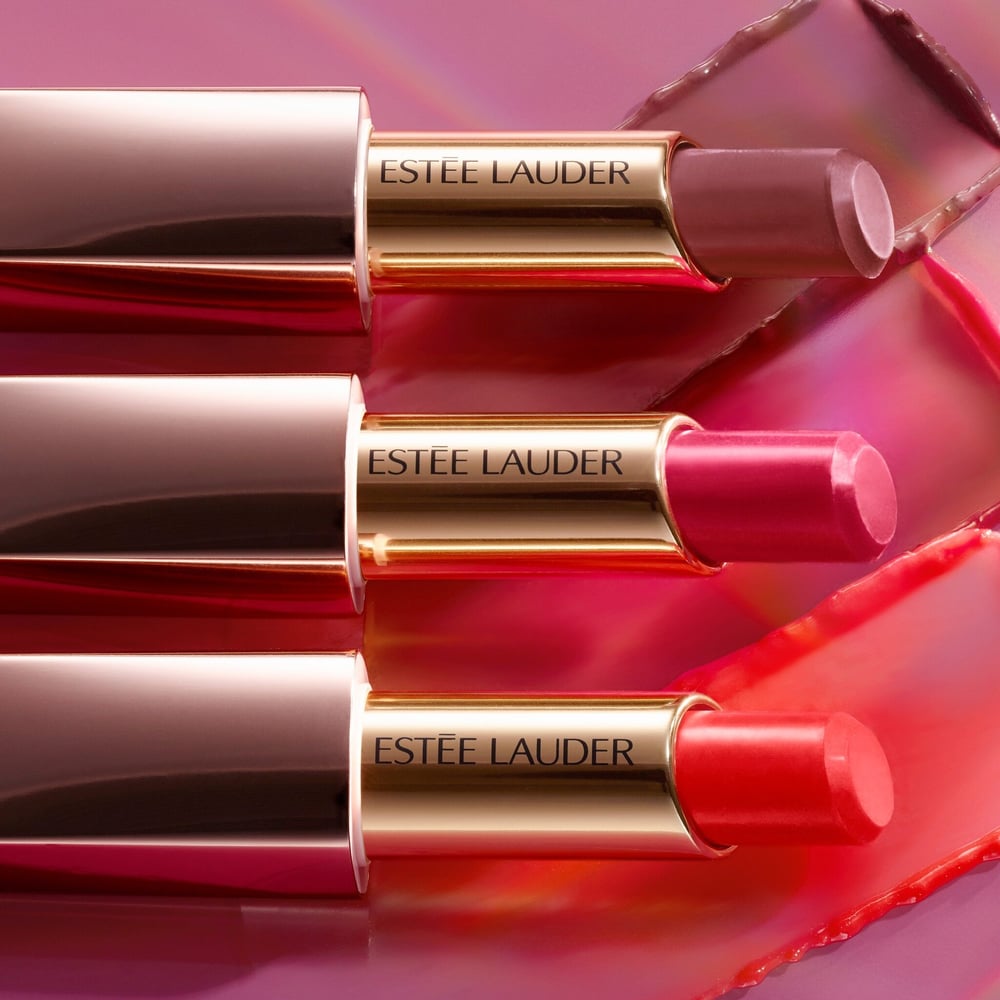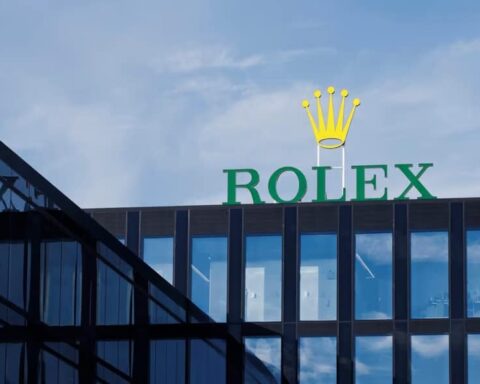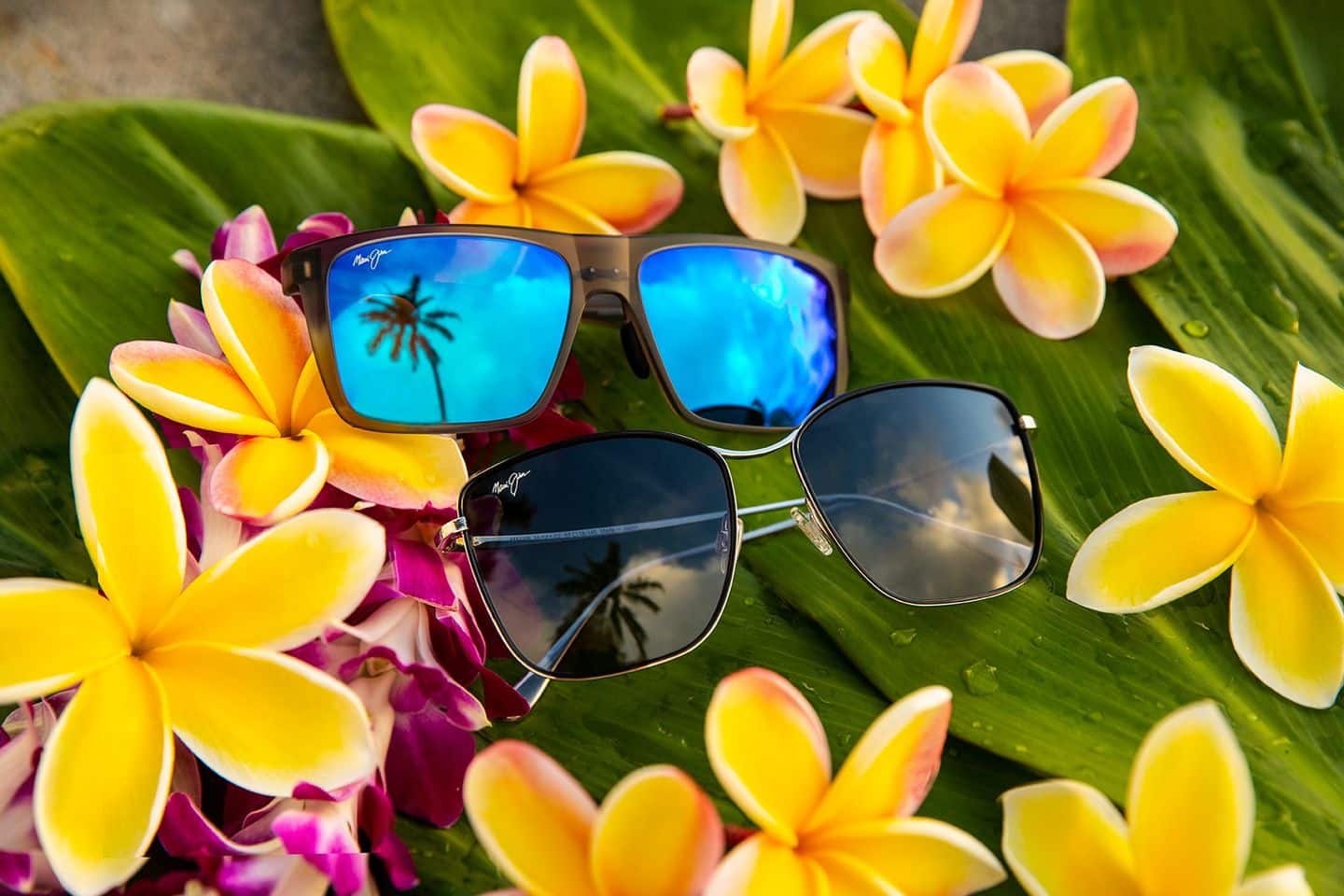[vc_row njt-role=”people-in-the-roles” njt-role-user-roles=”administrator,editor,author,armember”][vc_column][vc_column_text]
Last Friday, Estée Lauder announced annual sales and earnings forecasts below expectations, highlighting a slower-than-expected recovery in its travel retail business, mainly in Asia, and declining demand in the US. This led to a decrease of around 3% in the value of its shares.
The global cosmetic products company Estée Lauder unveiled projections for annual sales and profits below expectations on Friday, August 18th. These projections highlight a slower-than-expected recovery in its retail sales activity linked to travel, mainly in Asia, as well as a drop in demand on its own turf in the United States.
Analysts point out that the decline in consumer demand in China and the slow recovery of travel-focused retail transactions in Asia, including airport sales and travel destinations such as Korea and Hainan in China, could have a negative impact on luxury companies like Estée Lauder, which generates about 30% of its annual revenue in the Asia-Pacific region.
“The situation has been somewhat volatile in terms of individual travelers going to Hainan… It’s gone slower than what our customers thought, and certainly slower than what we thought as well,” said Tracey Travis, the CFO of the American group.
As a result, Estée Lauder is forecasting an annual sales increase between 5% and 7%, compared to an estimated increase of 8.8% according to Refinitiv data. The company anticipates an adjusted annual profit ranging from $3.50 to $3.75 per share, compared to an expectation of $4.83.
Unstable Prospects
Last month, the French cosmetics manufacturer L’Oréal also indicated that the Chinese market was not rebounding as quickly as expected, while European competitor LVMH reported a cooling demand in the United States.
Estée Lauder’s Americas region recorded steady net sales, while the Asia-Pacific region saw a 29% increase during the quarter. However, the company’s pessimistic forecasts have raised questions among analysts regarding the lingering uncertainty in Hainan and on the Chinese mainland.
“The reduction in stocks and inventory levels in travel-focused retail in Asia will likely remain the biggest obstacle to growth in the coming quarters,” said analyst Callum Elliott of Bernstein.
Estée Lauder has also underinvested in advertising, thereby missing a golden opportunity to boost its sales, according to some analysts. Additionally, last month, hackers disrupted the company’s email for several days, causing delays in some online orders and potentially leading to millions of dollars in lost sales.
Struggles in Its Own Territory
Despite its illustrious history in the United States – the company was founded there in 1946 by the famous American entrepreneur – Estée Lauder is facing difficulties in its historical market. Its market share in the beauty and personal care products sector in the United States has declined by about a fifth, according to Euromonitor. In contrast, L’Oréal has seen its market share increase by a tenth, reaching 13.7% over the same period, solidifying its position as a leader in the beauty and personal care products sector in the United States.
L’Oréal also holds a slight edge over Estée Lauder in the category of “prestige” beauty and personal care products in the United States, which is a setback for Estée Lauder, as it specializes in high-end products compared to L’Oréal. The French company owns more mass-market brands such as Maybelline and Garnier.
L’Oréal’s dominance is partly due to its size: it generated about $42 billion at the current exchange rate last year and employs around 88,000 people. In contrast, Estée Lauder had nearly $18 billion in revenue in 2022 and employs over 60,000 employees. This situation is not solely a matter of size. L’Oréal’s skincare products seem to resonate better with American consumers than those of Estée Lauder, according to an analysis prepared by Yogi. Among the top-rated 50 skincare products from both companies, Yogi found that L’Oréal sold 40 of them.
Despite the fact that Estée Lauder has acquired ingredient-focused brands such as The Ordinary and launched Clinique decades ago, it has not “leveraged this in the same way that L’Oréal has been able to do.”
Hopes Rest on the Asian Market
Estée Lauder’s hopes for a turnaround now largely rely on Asia. One of the reasons revenues have suffered is that the company did not invest enough in local manufacturing to support regional sales, according to Barclays analyst Lauren Lieberman.
For instance, in the fiscal year ending in June 2012, Estée Lauder had 21% of its operational facilities in the Asia-Pacific region, in line with its sales share in the region. Ten years later, the region accounted for about a third of sales but only 14% of operational facilities.
While the new Asian facilities will help correct this imbalance, the factories did not open quickly enough to enable Estée Lauder to navigate China’s reopening early in the year. Instead, the company’s long supply chains forced it to send goods to Chinese duty-free shops and other retailers at least six months in advance. When they shipped the products, Estée Lauder’s executives gambled that China’s reopening would be increasing: a sharp surge in demand that would accelerate rapidly. So, they shipped a lot of goods.
However, the recovery for Estée Lauder has been more gradual. This left travel-focused retail shops with too much inventory and not enough demand.
Succession Questions
The challenges Estée Lauder faces have raised questions within and outside the company about the choice of a successor to the current CEO, Fabrizio Freda, who is 65 years old and has been in office since 2009. Freda is eager to remain in office at least until June 30, 2024, when he will receive stock payments. In a conference in December, he expressed his “full determination to continue leading this company in the foreseeable future.”
While it is still too early for a favored candidate to emerge in discussions about succession, several internal candidates have been mentioned in recent months. Among them are Jane Lauder, Chief Data Officer and granddaughter of the founder; Stéphane de la Faverie, one of the two presidents of the executive group; and Tracey Travis, CFO since 2012, according to sources close to the company who wished to remain anonymous.
The three leaders have not responded to requests for comments. In May, Executive Chairman William Lauder sent a note to employees to commend Fabrizio Freda: “Under Fabrizio’s leadership, the company is implementing a successful long-term strategy.”
The Lauder family holds about 86% of the voting rights in one of America’s largest family-owned enterprises. However, investors and analysts credit Freda with instilling financial and professional discipline, more than doubling the company’s revenue from $7.8 billion in 2010 to $17.7 billion in 2022.
Read also>Beauty: Estée Lauder sales fall, Bogart sales rise
Featured photo : ©Estée Lauder [/vc_column_text][/vc_column][/vc_row][vc_row njt-role=”not-logged-in”][vc_column][vc_column_text]
Last Friday, Estée Lauder announced annual sales and earnings forecasts below expectations, highlighting a slower-than-expected recovery in its travel retail business, mainly in Asia, and declining demand in the US. This led to a decrease of around 3% in the value of its shares.
The global cosmetic products company Estée Lauder unveiled projections for annual sales and profits below expectations on Friday, August 18th. These projections highlight a slower-than-expected recovery in its retail sales activity linked to travel, mainly in Asia, as well as a drop in demand on its own turf in the United States.
Analysts point out that the decline in consumer demand in China and the slow recovery of travel-focused retail transactions in Asia, including airport sales and travel destinations such as Korea and Hainan in China, could have a negative impact on luxury companies like Estée Lauder, which generates about 30% of its annual revenue in the Asia-Pacific region.
“The situation has been somewhat volatile in terms of individual travelers going to Hainan… It’s gone slower than what our customers thought, and certainly slower than what we thought as well,” said Tracey Travis, the CFO of the American group.
As a result, Estée Lauder is forecasting an annual sales increase between 5% and 7%, compared to an estimated increase of 8.8% according to Refinitiv data. The company anticipates an adjusted annual profit ranging from $3.50 to $3.75 per share, compared to an expectation of $4.83.
Unstable Prospects
Last month, the French cosmetics manufacturer L’Oréal also indicated that the Chinese market was not rebounding as quickly as expected, while European competitor LVMH reported a cooling demand in the United States.
Estée Lauder’s Americas region recorded steady net sales, while the Asia-Pacific region saw a 29% increase during the quarter. However, the company’s pessimistic forecasts have raised questions among analysts regarding the lingering uncertainty in Hainan and on the Chinese mainland.
“The reduction in stocks and inventory levels in travel-focused retail in Asia will likely remain the biggest obstacle to growth in the coming quarters,” said analyst Callum Elliott of Bernstein.
Estée Lauder has also underinvested in advertising, thereby missing a golden opportunity to boost its sales, according to some analysts. Additionally, last month, hackers disrupted the company’s email for several days, causing delays in some online orders and potentially leading to millions of dollars in lost sales.
Struggles in Its Own Territory
Despite its illustrious history in the United States – the company was founded there in 1946 by the famous American entrepreneur – Estée Lauder is facing difficulties in its historical market. Its market share in the beauty and personal care products sector in the United States has declined by about a fifth, according to Euromonitor. In contrast, L’Oréal has seen its market share increase by a tenth, reaching 13.7% over the same period, solidifying its position as a leader in the beauty and personal care products sector in the United States.
[…][/vc_column_text][vc_cta h2=”This article is reserved for subscribers.” h2_font_container=”tag:h2|font_size:16|text_align:left” h2_use_theme_fonts=”yes” h4=”Subscribe now !” h4_font_container=”tag:h2|font_size:32|text_align:left|line_height:bas” h4_use_theme_fonts=”yes” txt_align=”center” color=”black” add_button=”right” btn_title=”I SUBSCRIBE !” btn_color=”danger” btn_size=”lg” btn_align=”center” use_custom_fonts_h2=”true” use_custom_fonts_h4=”true” btn_button_block=”true” btn_custom_onclick=”true” btn_link=”url:https%3A%2F%2Fluxus-plus.com%2Fen%2Fsubscriptions-and-newsletter-special-offer-valid-until-september-30-2020-2-2%2F”]Get unlimited access to all articles and live a new reading experience, preview contents, exclusive newsletters…
Already have an account ? Please log in.
[/vc_cta][vc_column_text]Featured photo : © Estée Lauder[/vc_column_text][/vc_column][/vc_row][vc_row njt-role=”people-in-the-roles” njt-role-user-roles=”subscriber,customer”][vc_column][vc_column_text]
Last Friday, Estée Lauder announced annual sales and earnings forecasts below expectations, highlighting a slower-than-expected recovery in its travel retail business, mainly in Asia, and declining demand in the US. This led to a decrease of around 3% in the value of its shares.
The global cosmetic products company Estée Lauder unveiled projections for annual sales and profits below expectations on Friday, August 18th. These projections highlight a slower-than-expected recovery in its retail sales activity linked to travel, mainly in Asia, as well as a drop in demand on its own turf in the United States.
Analysts point out that the decline in consumer demand in China and the slow recovery of travel-focused retail transactions in Asia, including airport sales and travel destinations such as Korea and Hainan in China, could have a negative impact on luxury companies like Estée Lauder, which generates about 30% of its annual revenue in the Asia-Pacific region.
“The situation has been somewhat volatile in terms of individual travelers going to Hainan… It’s gone slower than what our customers thought, and certainly slower than what we thought as well,” said Tracey Travis, the CFO of the American group.
As a result, Estée Lauder is forecasting an annual sales increase between 5% and 7%, compared to an estimated increase of 8.8% according to Refinitiv data. The company anticipates an adjusted annual profit ranging from $3.50 to $3.75 per share, compared to an expectation of $4.83.
Unstable Prospects
Last month, the French cosmetics manufacturer L’Oréal also indicated that the Chinese market was not rebounding as quickly as expected, while European competitor LVMH reported a cooling demand in the United States.
Estée Lauder’s Americas region recorded steady net sales, while the Asia-Pacific region saw a 29% increase during the quarter. However, the company’s pessimistic forecasts have raised questions among analysts regarding the lingering uncertainty in Hainan and on the Chinese mainland.
“The reduction in stocks and inventory levels in travel-focused retail in Asia will likely remain the biggest obstacle to growth in the coming quarters,” said analyst Callum Elliott of Bernstein.
Estée Lauder has also underinvested in advertising, thereby missing a golden opportunity to boost its sales, according to some analysts. Additionally, last month, hackers disrupted the company’s email for several days, causing delays in some online orders and potentially leading to millions of dollars in lost sales.
Struggles in Its Own Territory
Despite its illustrious history in the United States – the company was founded there in 1946 by the famous American entrepreneur – Estée Lauder is facing difficulties in its historical market. Its market share in the beauty and personal care products sector in the United States has declined by about a fifth, according to Euromonitor. In contrast, L’Oréal has seen its market share increase by a tenth, reaching 13.7% over the same period, solidifying its position as a leader in the beauty and personal care products sector in the United States.
[…][/vc_column_text][vc_cta h2=”This article is reserved for subscribers.” h2_font_container=”tag:h2|font_size:16|text_align:left” h2_use_theme_fonts=”yes” h4=”Subscribe now !” h4_font_container=”tag:h2|font_size:32|text_align:left|line_height:bas” h4_use_theme_fonts=”yes” txt_align=”center” color=”black” add_button=”right” btn_title=”I SUBSCRIBE !” btn_color=”danger” btn_size=”lg” btn_align=”center” use_custom_fonts_h2=”true” use_custom_fonts_h4=”true” btn_button_block=”true” btn_custom_onclick=”true” btn_link=”url:https%3A%2F%2Fluxus-plus.com%2Fen%2Fsubscriptions-and-newsletter-special-offer-valid-until-september-30-2020-2-2%2F”]Get unlimited access to all articles and live a new reading experience, preview contents, exclusive newsletters…
Already have an account ? Please log in.
[/vc_cta][vc_column_text]Featured photo : © Estée Lauder[/vc_column_text][/vc_column][/vc_row]











